Should pizza dough be cold or room temperature
Home » Oven Temp » Should pizza dough be cold or room temperatureShould pizza dough be cold or room temperature
Should Pizza Dough Be Cold Or Room Temperature. Nov 09 2008 The dough should be fermented in the cooler overnight or at least 2 hours at room temperature assuming a finished dough temperature in the 80 to 85F range. Knead the dough until smooth. But its safe to assume that this means room temperature. Go hot and fast.
 Best Pizza Dough Proofing Temperature Crust Kingdom From crustkingdom.com
Best Pizza Dough Proofing Temperature Crust Kingdom From crustkingdom.com
It can then be placed in the fridge for 1-3 days before the flavor starts getting strong. Dough that is colder than 65 degrees will be very difficult to stretch. After your dough has been stored in the cooler or retarder for 18 hours or more it will have cooled down to about the temperature of the coolers interior. Proofing Pizza Dough at Room Temperature. When the dough has roughly doubled in size remove the dough from the fridge. Overproofing happens when you let the dough rest for too long and it starts losing its shape and texture because.
Yes pizza dough should be between 65 and 75 degrees before you begin stretching.
Some doughs should be left to rise overnight or be kept in a refrigerator. Stretching dough - Cold versus Room Temp. Pizza dough will keep for about 2 weeks in the fridge. Cover the dough loosely and then let it come to room temperature. The dough should be fermented in the cooler overnight or at least 2 hours at room. 2 Use of cold dough straight from the cooler.
 Source: alexandracooks.com
Source: alexandracooks.com
Therefore pizza dough stored in a lower temperature like in the fridge or freezer will last longer than in room temperature. Pizza dough will keep for about 2 weeks in the fridge. Dough that is colder than 65 degrees will be very difficult to stretch. Cold temperatures wont kill yeast but just slows fermentation so an airtight container or plastic wrapped dough in the fridge works well. But 350 degrees will get you nowhere on your quest for pizza nirvanayoull wind up with a limp crust and overcooked toppings.
 Source: crustkingdom.com
Source: crustkingdom.com
Should I let pizza dough rise before refrigerating. Once you remove the dough from the cooler if you take it directly to the make table and then put it in the oven the dough will. For a ½ pound ball of dough this will take about 30 minutes. It can then be placed in the fridge for 1-3 days before the flavor starts getting strong. When the dough has roughly doubled in size remove the dough from the fridge.
 Source: thekitchn.com
Source: thekitchn.com
The best starting point is to proof pizza dough at room temperature. Should I let pizza dough rise before refrigerating. When you are ready to use the dough remove it from the fridge unwrap the dough and place it on your counter or in a lightly floured bowl. Bring your dough to room temperature. Cover the dough loosely and then let it come to room temperature.
 Source: thepizzaheaven.com
Source: thepizzaheaven.com
Bring your dough to room temperature. Bring your dough to room temperature. Knead the dough until smooth. This allows the dough to warm slightly for yeast activity. When the dough has roughly doubled in size remove the dough from the fridge.
 Source: pizzacraft.com
Source: pizzacraft.com
So in most homemade pizza recipes the dough should be proofing in room temperature the pizza dough. Some think that you need to bring your commercial pizza dough up to room temperature while others think that its best to place it in the fridge to defrost and then pull out to once again bring to room. Knead the dough until smooth. It can then be placed in the fridge for 1-3 days before the flavor starts getting strong. The best starting point is to proof pizza dough at room temperature.

Allow dough balls to warm AT room temperature for about 15 hours before shaping dressing and baking. For a ½ pound ball of dough this will take about 30 minutes. So in most homemade pizza recipes the dough should be proofing in room temperature the pizza dough. After your dough has been stored in the cooler or retarder for 18 hours or more it will have cooled down to about the temperature of the coolers interior. Gluten the protein that makes pizza dough chewy is tighter in cold conditions like the fridge which is why cold pizza dough will stretch out and snap back just like a rubber band.
 Source: aspizzaproject.com
Source: aspizzaproject.com
Before you place the dough into the oven it should be at room temp even without proofing. It can then be placed in the fridge for 1-3 days before the flavor starts getting strong. But 350 degrees will get you nowhere on your quest for pizza nirvanayoull wind up with a limp crust and overcooked toppings. Gluten the protein that makes pizza dough chewy is tighter in cold conditions like the fridge which is why cold pizza dough will stretch out and snap back just like a rubber band. All of the experts interviewed for this article agreed that a cold fermentation is best for producing a flavorful pizza dough thats airy and easy to digest and that at least 24 hours is best.
 Source: crustkingdom.com
Source: crustkingdom.com
Place the covered pizza dough in the fridge to cold prove for 24 to 72 hours. Once you remove the dough from the cooler if you take it directly to the make table and then put it in the oven the dough will. Stretching dough - Cold versus Room Temp. Proofing Pizza Dough at Room Temperature. Some doughs should be left to rise overnight or be kept in a refrigerator.
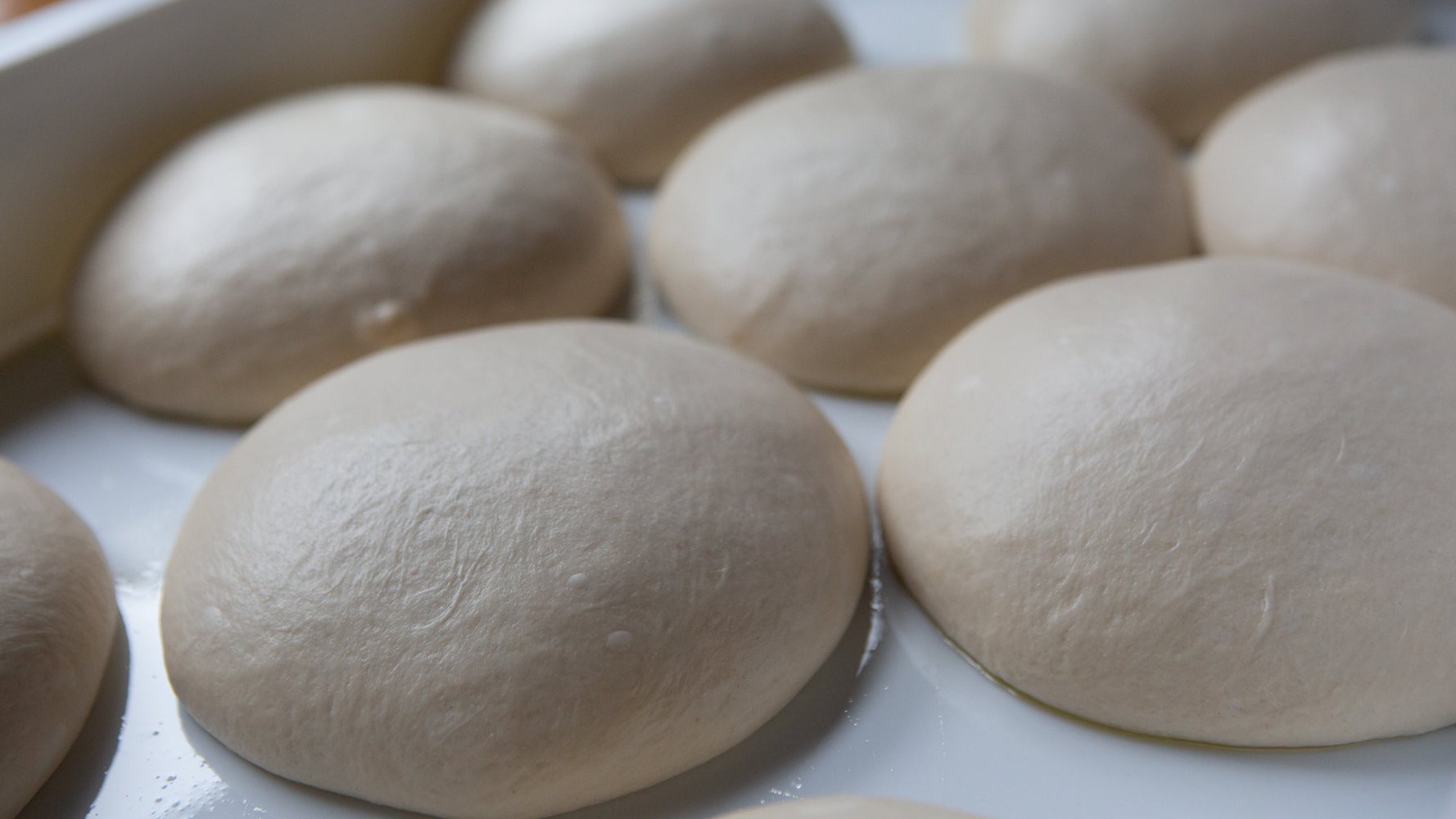 Source: huffpost.com
Source: huffpost.com
This allows the dough to warm slightly for yeast activity. Allow dough balls to warm AT room temperature. Therefore pizza dough stored in a lower temperature like in the fridge or freezer will last longer than in room temperature. For the list of ingredients check out my pizza dough recipe. The gluten within the dough will pull it back to its original shape and stretching will become a losing battle.
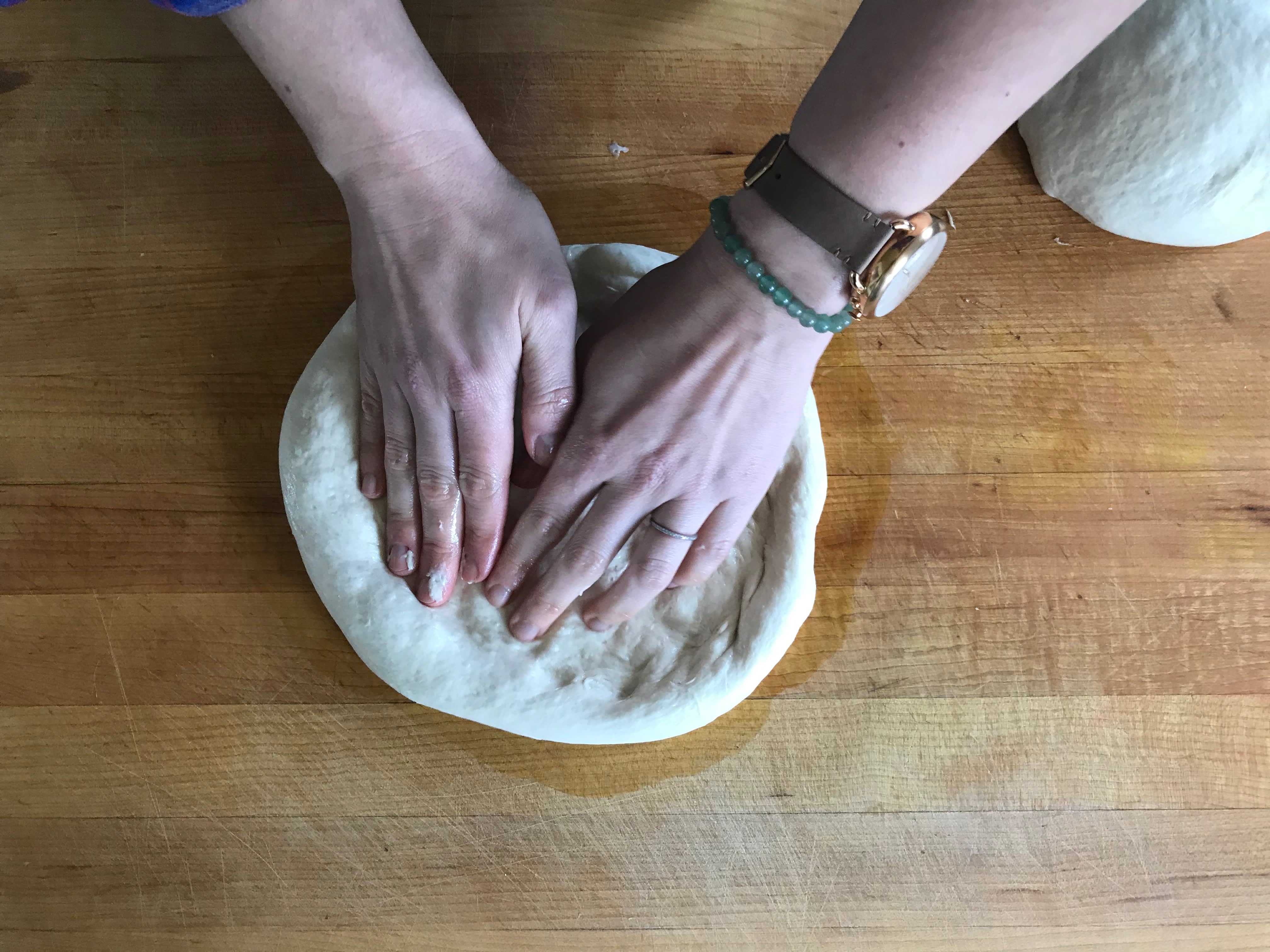 Source: thekitchn.com
Source: thekitchn.com
2 Use of cold dough straight from the cooler. Should I let pizza dough rise before refrigerating. Yes you want to give the dough a slight head start with the fermentation process so the usual recommendation is to leave the dough for one hour at room temperature after it has been kneaded. Therefore pizza dough stored in a lower temperature like in the fridge or freezer will last longer than in room temperature. Gluten the protein that makes pizza dough chewy is tighter in cold conditions like the fridge which is why cold pizza dough will stretch out and snap back just like a rubber band.
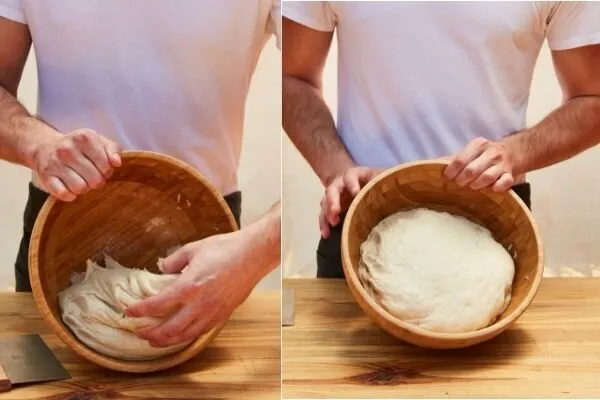 Source: huffpost.com
Source: huffpost.com
Nov 09 2008 The dough should be fermented in the cooler overnight or at least 2 hours at room temperature assuming a finished dough temperature in the 80 to 85F range. Stretching dough - Cold versus Room Temp. A Preparing refrigerated dough for use is a crucial step in the pizza making process. Some think that you need to bring your commercial pizza dough up to room temperature while others think that its best to place it in the fridge to defrost and then pull out to once again bring to room. Pizza dough is easiest to stretch at room temperature so if youve cold-proved your dough then be sure to give it at least 4 hours out of the fridge to get back to room temperature.
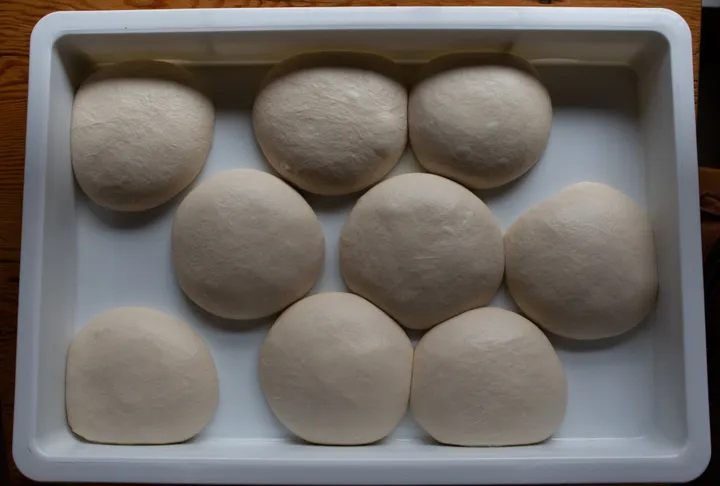 Source: huffpost.com
Source: huffpost.com
1 Insufficient dough fermentation. If your dough is too cold it will be hard to work with and it will spring back in on itself. This allows the dough to warm slightly for yeast activity. Dough that is colder than 65 degrees will be very difficult to stretch. Yes you want to give the dough a slight head start with the fermentation process so the usual recommendation is to leave the dough for one hour at room temperature after it has been kneaded.
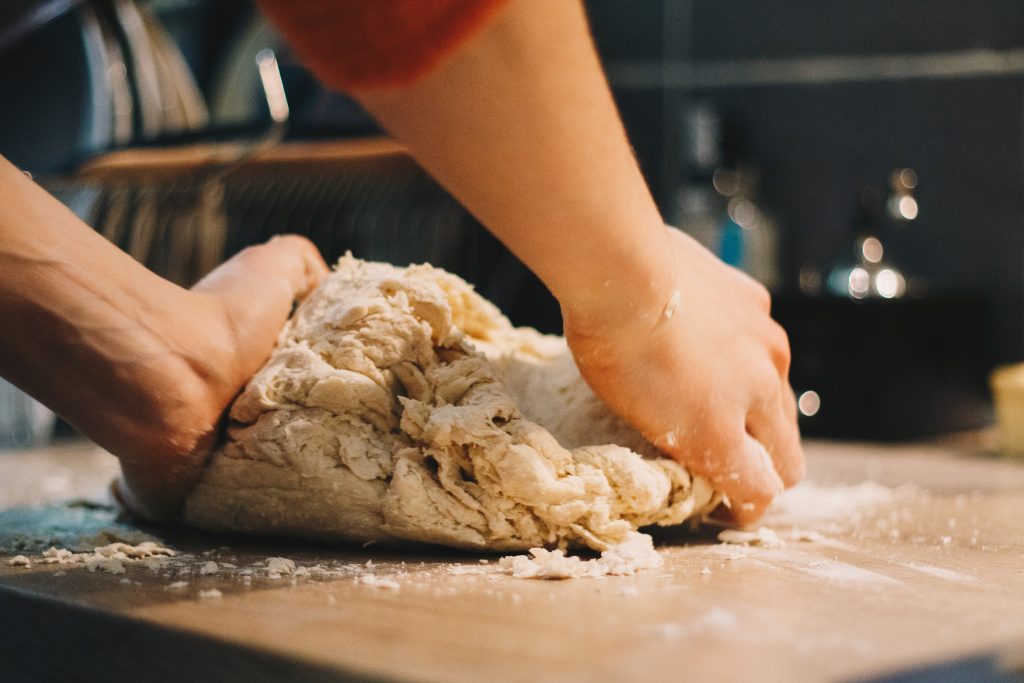 Source: thepizzaheaven.com
Source: thepizzaheaven.com
Proofing Pizza Dough at Room Temperature. But if you want to be fancy cold-fermenting the dough or make a Neapolitan-style pizza you want to lower the temperature. Stretching dough - Cold versus Room Temp. The best starting point is to proof pizza dough at room temperature. Cover the dough loosely and then let it come to room temperature.
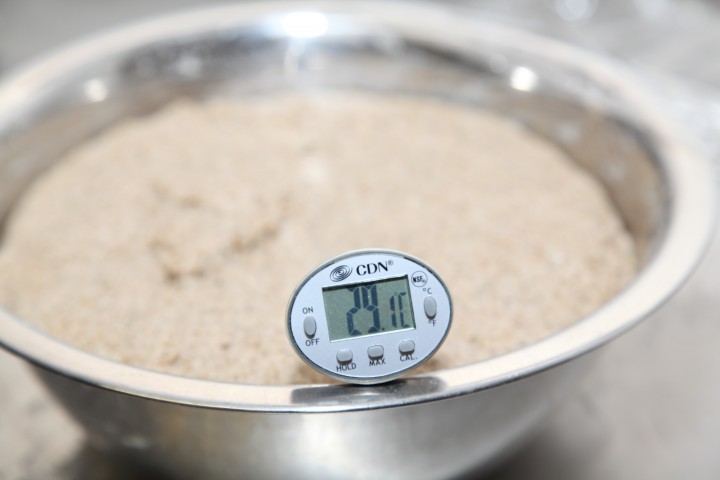 Source: weekendbakery.com
Source: weekendbakery.com
Cold temperatures wont kill yeast but just slows fermentation so an airtight container or plastic wrapped dough in the fridge works well. It can then be placed in the fridge for 1-3 days before the flavor starts getting strong. When the dough has roughly doubled in size remove the dough from the fridge. Place the covered pizza dough in the fridge to cold prove for 24 to 72 hours. Allow dough balls to warm AT room temperature for about 15 hours before shaping dressing and baking.
 Source: pizzaotherbread.wordpress.com
Source: pizzaotherbread.wordpress.com
Cold temperatures wont kill yeast but just slows fermentation so an airtight container or plastic wrapped dough in the fridge works well. Knead the dough until smooth. Therefore pizza dough stored in a lower temperature like in the fridge or freezer will last longer than in room temperature. Overproofing happens when you let the dough rest for too long and it starts losing its shape and texture because. Around 2-3 days is the optimum before it starts deteriorating.
If you find this site adventageous, please support us by sharing this posts to your favorite social media accounts like Facebook, Instagram and so on or you can also save this blog page with the title should pizza dough be cold or room temperature by using Ctrl + D for devices a laptop with a Windows operating system or Command + D for laptops with an Apple operating system. If you use a smartphone, you can also use the drawer menu of the browser you are using. Whether it’s a Windows, Mac, iOS or Android operating system, you will still be able to bookmark this website.
Category
Related By Category
- What temperature do you cook pork loin ribs
- What temp should i cook brisket too
- What temperature should you cook pork at
- What temperature do you bake brisket at
- What temperature should you cook pork chops at
- What temperature do you cook chicken breast on a traeger
- What temp to cook boneless chicken breast on grill
- What temperature to slow cook chicken thighs
- What temp do i bake chicken breast at
- What temp do you cook pork chops too